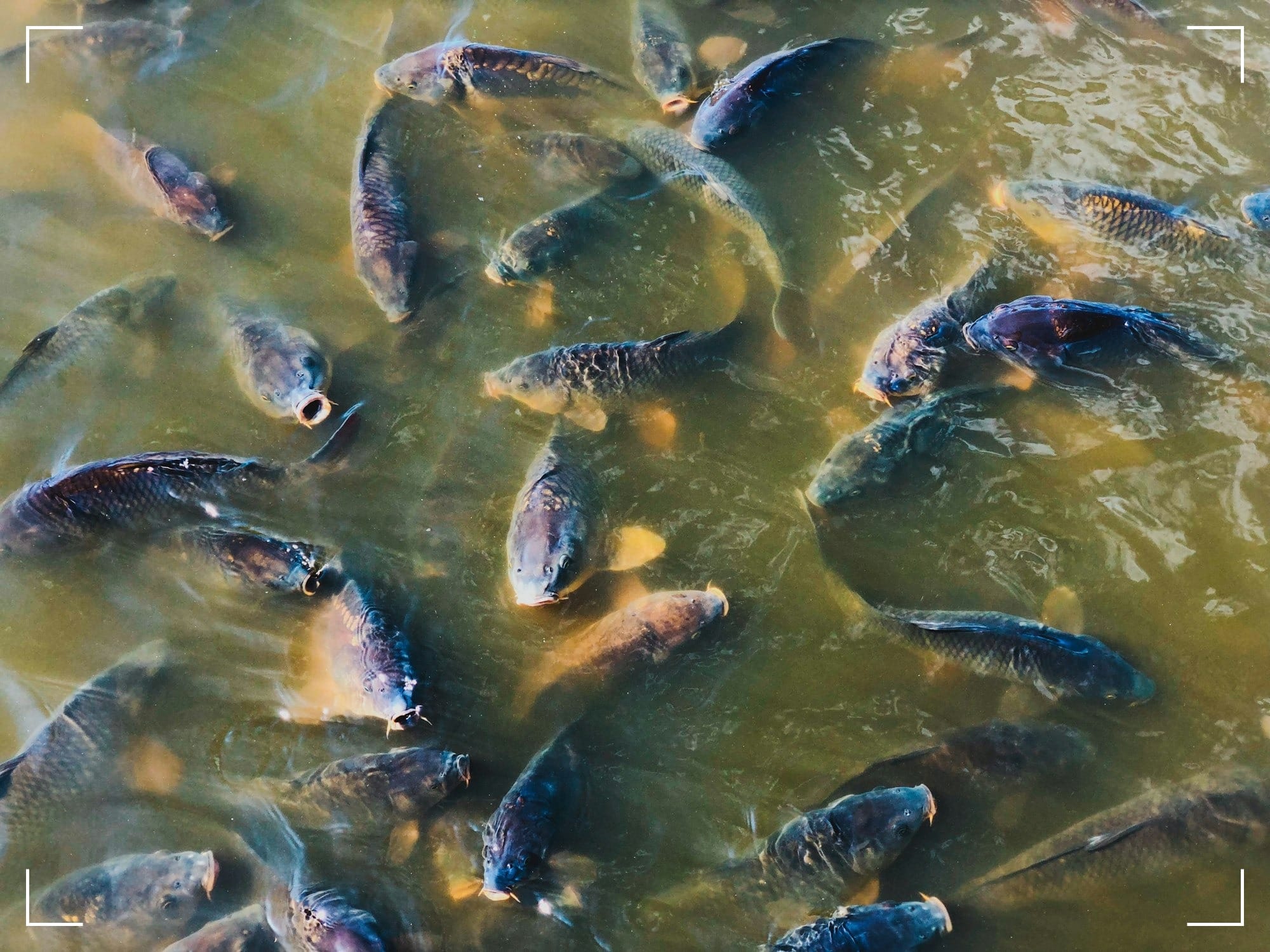First to America: Carp
Carp introduction in North America pre-dates brown trout introduction, and the hatchery propagation of rainbow trout

March 2023
Origins
Many anglers have heard the iconic tales of rainbow trout stocking in new waters carried on the backs of mules in milk crates. Or about the transport of German and Scottish brown trout eggs to North America on steamships from Europe. But before either rainbow and brown trout established themselves as widespread fish, Common carp were the first commercial transplant to populate the waters of the new world. This might seem surprising from an American perspective, but around the globe carp are widely appreciated, they are the oldest cultured and domesticated fish in any historic culture. With origins in East Asia they became symbolic for luck to the Chinese who developed the ornate koi variants. Later they were taken from the Danube river by Romans, and introduced to Europe. Again the fish gained popularity, it’s even considered a traditional delicacy on Christmas Eve in Austria.
Coming to America
Carp were first introduced in 1831, which predates the arrival of brown trout (1860s) and the hatchery propagation of rainbow trout (1870s). The popular trends of the time in Europe favored personal ponds full of carp to provide extra table-fare. Championed by a German entrepreneur, Julius A. Poppe lobbied hard for an American adaptation to this movement. Confronted with declining stocks of native fish, the authority of the time, The U.S. Commission of Fish and Fisheries, gave in to expansive carp propagation. Though the fish survived well, and adapted to their new surroundings, they quickly gained the reputation as a nuisance fish. They transformed some clear productive lakes into turbid murky waters, their meat didn’t satisfy the American public as hoped, and they were rapidly spreading. Just as soon as they arrived, they became the scape-goat for the demise of other popular game fish. But that’s not the whole story.
The arrival of carp into the United States coincided with the onset of industrialization and the widespread manipulation of nature. Streams were channelized, wetlands drained, riverbanks eroded, entire hillsides clear-cut of trees, and new sources of human and industrial waste were leaching into waterways. Dams were installed, to meet the demand on large-scale mills, blocking migratory fish and flooding upstream habitat. Manufacturers dumped waste into river systems transforming rivers into vast sewer networks. The loss of popular gamefish was notable, and one of the only fish left swimming was the lowly carp. By this time carp had taken hold and the public found some easy dots to connect. And so right or wrong, they were blamed. The adaptability of carp to withstand stagnant, warm, turbid, polluted water had lost them favor within the United States. Now by the turn of the century the fish commission went to war to remove carp. But the efforts were half hearted. Without a true desire to remove dams and restore the scarred landscape in support of stream habitat, at the cost of economic advancement, the outcome was already determined.
Recent
In modern America, carp have just recently seen the embrace originally conceived by the initial proponents of the introduction. All this while carp have been exalted as a trophy angling species in the United Kingdom, and enthusiasts waged bidding wars with each other to claim prized koi in Asia. Only by the late 1990s had the fly fishing culture (the snobbiest of all fishing subcultures) embraced carp with a definitive manual on how to approach this target in Barry Reynold and company's Carp on the Fly. If the fly anglers were getting into it, we must really be turning over a new leaf.
Our society has also cleaned its act up since the early industrial revolution, and the grimy connotation associated with carp is slowly washing away. Though common carp are still an invasive species, they’re found all across the United States, including many clear rivers, and sparkling lakes. Very little is being done to remove them, at least the common carp. So maybe we’ve finally made our peace with carp?... Well not all carp...
Future

Carp proponents are making a new case for carp as food, but this time it’s not the common carp. Bighead and silver carp (related but different from common carp) are rapidly invading midwestern waters and fisheries managers are again trying to tempt America’s taste buds in hopes of wrangling the invaders. If we can stir up a new market for harvesting these fish, maybe we can further prevent carp expansion. Humanity is pretty good at suppressing fish populations when we try hard enough. But why? There is grave concern for what would happen to native fish and ecosystems if bighead or silver carp were to make it into the Great Lakes. Up until this point they’ve invaded much of the Mississippi River network and are spreading even further.
Are we doomed to repeat the cycle again? First, carp introduction. Then, ecological disaster, long period of slow environmental clean up, culture shift, and finally acceptance. Maybe even fly fishing? In the meantime, check out Copi tacos for a taste of modern carp. You might just be supporting the fight against the next wave of carp invasion.
Sources:
- National Park Service. 2019. History of Common Carp in North America. https://www.nps.gov/miss/learn/nature/carphist.htm
- United States Geological Survey. 2007. Carrisius carassius. https://web.archive.org/web/20071213132411/http://nas.er.usgs.gov/queries/FactSheet.asp?speciesID=509
- Wikipedia. Rainbow Trout. https://en.wikipedia.org/wiki/Rainbow_trout#:~:text=The%20first%20rainbow%20trout%20hatchery,irideus).
- United States Forest Service. Accessed 2022. Brown Trout - salmo trutta https://www.fs.usda.gov/Internet/FSE_DOCUMENTS/fsbdev3_018455.pdf
- Kuta, S. 2022. Can Rebranding Invasive Carp Make It More Appealing to Eat? https://www.smithsonianmag.com/smart-news/can-rebranding-invasive-carp-make-it-more-appealing-to-eat-180980320/
- Buffler, R. & Dickson, T. The History of Carp (Cyprinus Carpio) in North America. Accessed 2022. American Carp Society. https://americancarpsociety.com/us-carp-history
- Yale University. Accessed 2022. Water Power, Industrial Manufacturing, and Environmental Transformation in 19th-Century New England. https://energyhistory.yale.edu/units/water-power-industrial-manufacturing-and-environmental-transformation-19th-century-new-england
- Pietsch, C. & Hirsch, P. 2015. Biology and ecology of carp. CRC Press. https://doi.org/10.1201/b18547
- Reynolds, B., Befus, B. & Berryman, J. 1997. Carp on the Fly: A Flyfishing Guide. Johnson Books.


